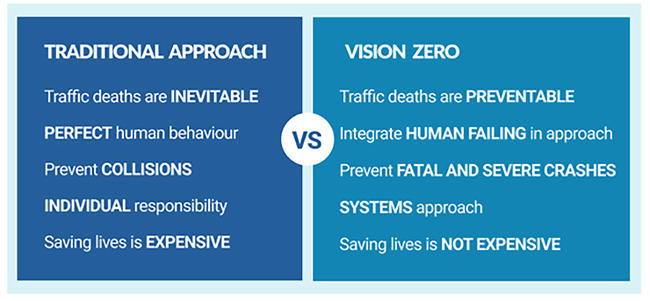History of Vision Zero¶
Vision Zero is a strategy to eliminate roadway fatalities and severe injuries while increasing safe, healthy, equitable mobility for all. First implemented in Sweden in the 1990s, Vision Zero has proved successful across Europe - and now it’s gaining momentum in major American cities.
The Vision Zero Network was created to build momentum and advance Vision Zero in communities across the U.S. Their approach acknowledges that humans will make mistakes and focuses on reducing, and eventually eliminating, the chances that those mistakes result in loss of life. The City of Tampa was officially admitted as a member of the Vision Zero Network in 2020.

